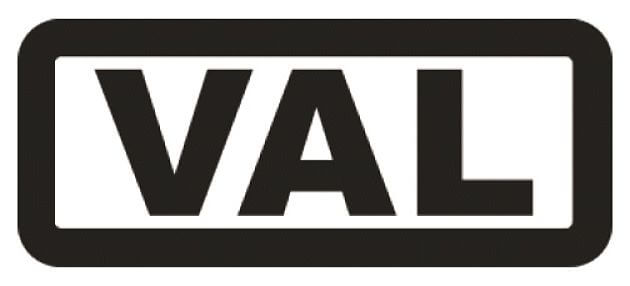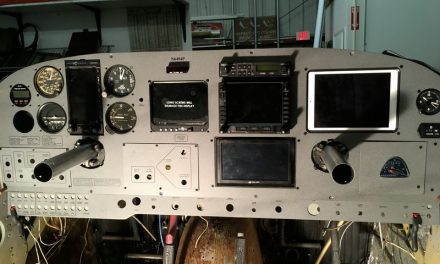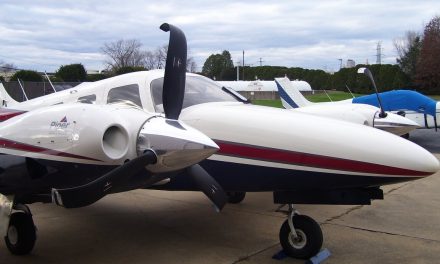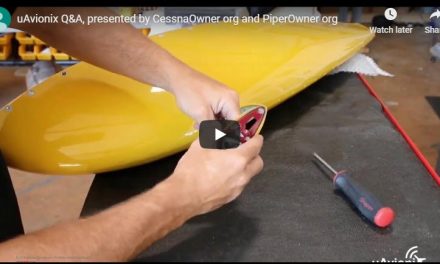The mid-1980s were a fertile time for the aviation industry and for the general aviation avionics industry. Several new avionics manufacturers, big and small, came on the scene in the ’80s. VAL Avionics was one of them and it survived when others failed. In my writing, I have favored small avionics manufacturers who support “legacy” owners with affordable products that work. VAL is one of those companies. I recently took a new look at VAL Avionics and this is what I found.
Company History
VAL Avionics got its start as a radio shop in Salem, Oregon, in 1979. Back then, Don Sloane and Robie Furlong, the owners, were installing other manufacturers’ avionics. They noted that avionics prices were climbing and that the technology was increasing, but that aircraft owners were installing expensive avionics and only using a small portion of the equipment’s capability. They felt there was a place for a simpler approach. Why not create simple, affordable, high quality avionics that meet but don’t exceed the mission? Jim Harr joined the company in 1986 as an engineer and they headed to the drawing board. In 1987 VAL’s first product, the COM 760 TSO, was born. A base station version (the BS7600) of the COM 760 would come later and a solid-state lighting solution, the CLA 500, targeting the homebuilt market, would be added to the VAL line. Jim, who started at the bottom at VAL, wore many hats in his first 5 years with the company and “believing in what we started,” he bought the company in 2003.
This article originally appeared in the December 2019 issue of PIPERS magazine.
The VAL COM 760 TSO had an 8-watt transmitter when other comms at the same price point offered only 5 watts, and the price was considerably less than the other comms on the market. It had a unique “auto-toggle” feature, electronic tuning, and a digital frequency synthesizer, which were advanced features, especially compared to the radios found in most aircraft at the time. In 1992, VAL’s design team moved its attention to navigation and ILS. Thus the ILS 400 was born. The ILS 400 was a complete instrument landing system including a three-light marker beacon receiver all contained in a standard 3 1/8-inch instrument hole. The INS 422 came later and added VOR navigation capability.
In the late ’90s when I entered avionics sales, the COM 760 was in its teens and I had more than one avionics customer who mentioned problems with the toggle switches in their VAL 760. I saw it as a weakness in the design. Regardless, the COM 760 TSO was a pretty successful product for VAL and my small sampling of a few unhappy owners was not a clear picture of what was going on at VAL.
After a 20-year run with the COM 760 TSO, VAL introduced the new generation of products starting with the COM 2000 in 2008. However, as Jim stated, “Nobody noticed!” If you recall the state of the economy, the bottom started falling out in 2008 and pilots put their credit cards away for about three years. The changes at VAL went unnoticed by me and the GA avionics market. Let’s take a look at the products available today from VAL Avionics.
COM 2000
$1,285
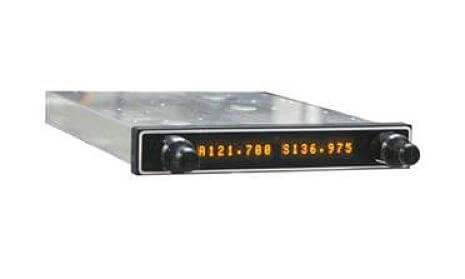
If panel space is an issue in your aircraft, you might note that the COM 2000 is only 1 inch tall, making it the smallest of the comms. That also means that if you add the NAV 2000, they will both fit where a 2-inch legacy nav/comm used to be! Both units offer the features that pilots are looking for and a few extra. The COM 2000 has full 8-watt transmit power and offers an easy to read alphanumeric LED display. The toggle switches were replaced by dual concentric knobs. You can store 15 preset frequencies and add your own alphanumeric identifiers to make them easy to find. Auto squelch with manual override is available as is an RS-232 interface. Jim anticipated the EFIS revolution and this connection emulates the Garmin SL40 protocol and allows the COM 2000 to interface to EFIS units allowing you to transfer frequencies seamlessly from an EFIS database into the COM 2000. Compatible certified EFIS options are limited at this time but we know that will change. You can read more about the COM 2000 at www.valavionics.com/com-2000.html.
NAV 2000
$1,399 or available with the COM 2000 for $2,560
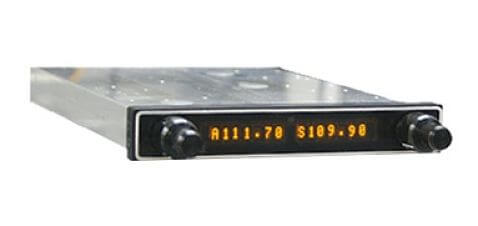
Add the NAV 2000 to your COM 2000 and your new VAL nav/comm fits nicely into a 2-inch slot in your avionics panel. Jim suggests that these are the perfect replacement for an aging KX-170B or Cessna nav/comm. It is certainly a significant upgrade for both in features and performance! The NAV 2000 has built-in VOR, ILS, and glideslope receivers and it is compatible with most CDIs, legacy or new, and it has a built-in CDI.
The NAV 2000 also has an RS-232 interface that emulates the Garmin SL-30 protocol and will seamlessly interface to many EFIS units for frequency transfer. Like the COM, the NAV 2000 allows you to store 15 frequencies with your own alpha-numeric identifiers. Read more about the NAV 2000 at www.valavionics.com/nav-2000.html.
INS 429 Integrated Navigation System
$2,195
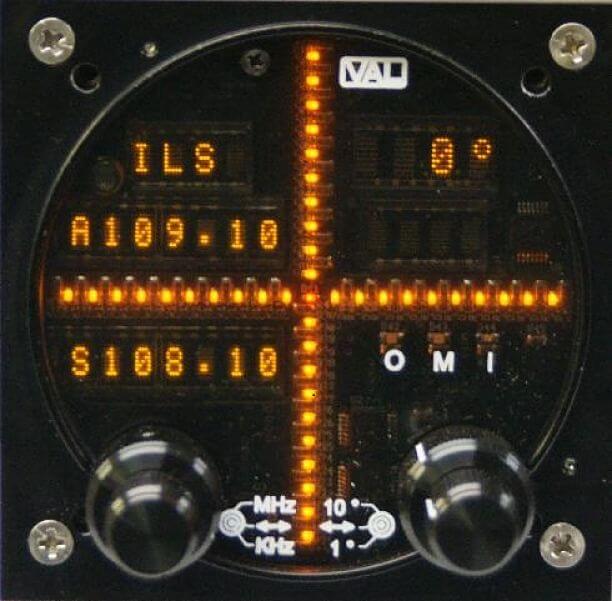
VAL first introduced a self-contained navigation unit in 1992. It was called the ILS 400 and it provided ILS navigation with glideslope and marker beacons in a self-contained unit using LED lights instead of needles to indicate deviation. Frankly, I have been a fan of the LEDs versus needles concept for a while. Bendix originally offered a unit 40 years ago and Terra picked up on the idea in the mid-1980s with its TRI-NAV CDI. TKM did the same in its MC-60. When traditional CDIs fail, it’s often the very sensitive needle movements themselves. The solution is solid-state but pilots, until recently, have been resistant to the change. The ILS 400 did not offer VOR navigation; that was added in the upgraded INS-422 in 2001. Today, we see the next generation of VAL’s self-contained nav units: the INS 429 with enhanced features from the previous two models. The most significant improvement is the INS 429’s ability to be both a self-contained VOR/ILS tool and to also serve as the CDI for an external nav or GPS unit. If you’re running out of 3-inch instrument holes, this can be a plus not to mention avoiding the added expense of an extra CDI. It’s a perfect upgrade for the aging Narco NAV 11/NAV 122 series of self-contained units that lack reliability and support! Like the COM and NAV 2000, the INS-429 has an RS-232 interface that will allow it to interface to EFIS databases for frequency transfer. All the nav receivers are built in; the VOR, ILS, and marker beacon receivers. The digital OBS offers push-button auto-radial centering and 180-degree reciprocal. The high intensity LED display is easy to see even in bright sunlight. Read more at www.valavionics.com/ins-429.
This article originally appeared in the December 2019 issue of PIPERS magazine.
Additional VAL Avionics Products
COM 2KR/NAV 2KR. VAL offers a remote version of its comm (the COM 2KR) and its nav (the NAV 2KR) that are designed to work with EFIS systems, but there are currently limited interfaces available for the certified aircraft owner. However, as more EFIS options become available for certified aircraft owners, the VAL remote units will be a consideration.
AWOS 2000. The AWOS 2000 is a solution for smaller airports that provide automatic weather observing service broadcasts for their pilots. It is a 760 channel, ground based, one-way transmitter for delivery of these broadcasts.
CLA 500 Cockpit Lighting Assembly. The CLA 500 is a four-channel cockpit lighting system that allows you to control cockpit and instrument lighting. Check VAL’s website for more information.
The original COM 760 was TSO’d but VAL’s new products are not. “TSO stands for technical standard order,” Jim explained. “That implies that the FAA has issued an order that pieces, parts, and appliances for airborne operation meet a technical standard. The FAA then goes on to direct to what standard each type of equipment is designed and tested. Additionally, in Part 21 the FAA spells out how it would like the manufacturer to structure its manufacturing and quality control programs and to what extent and manner the manufacturer will create and maintain those records. All of us manufacturers design and test our equipment to the same technical level, whether TSO’d or not. I have to admit that if you are a large company like King or Garmin the higher level of paper trail is a necessity, but when there are only a few personnel involved with the manufacturing process, that level of paper pushing is counterproductive.
VAL Avionics has chosen not to seek TSO merely to not open the doors for the agency to scrutinize how we keep our records. Otherwise our technical designs and quality assurance programs are comparable. Even though there is really no more cost involved in the production of TSO versus non-TSO’d equipment, the TSO does seem to grant license to charge more for the product if it is TSO’d, but the consumer really doesn’t end up with a better or more reliable product.” Jim suggests discussing this with your installer before purchasing a VAL unit. If they have an issue, I would share this with them www.valavionics.com/installation-in-type-certificated-aircraft.
Conclusion
VAL is a small avionics company that has been providing quality, affordable avionics products for the aircraft owner “on a budget” for more than 30 years. It has survived all this time when others have failed by sticking to these three goals: versatility (V), affordability (A), and longevity (L). VAL is a company you can call and order directly from.
They offer package pricing and can provide custom harnesses that your local A&P can install. This can be very handy in the kind of market we are in right now where getting into an avionics shop can be months away. VAL is also a company where you can call and speak to the owner. Try that with any of the “big” guys.
VAL is the only company that offers a self-contained NAV/ILS unit that can be the right solution in certain situations. In short, if your goal is quality but your budget has limitations and you’re buying avionics that meet your mission but you don’t want to pay for features you are not likely to use, then VAL may be just what you are looking for. I know I won’t be ignoring them!
Until next time, safe and happy flying!
This article originally appeared in the December 2019 issue of PIPERS magazine.

